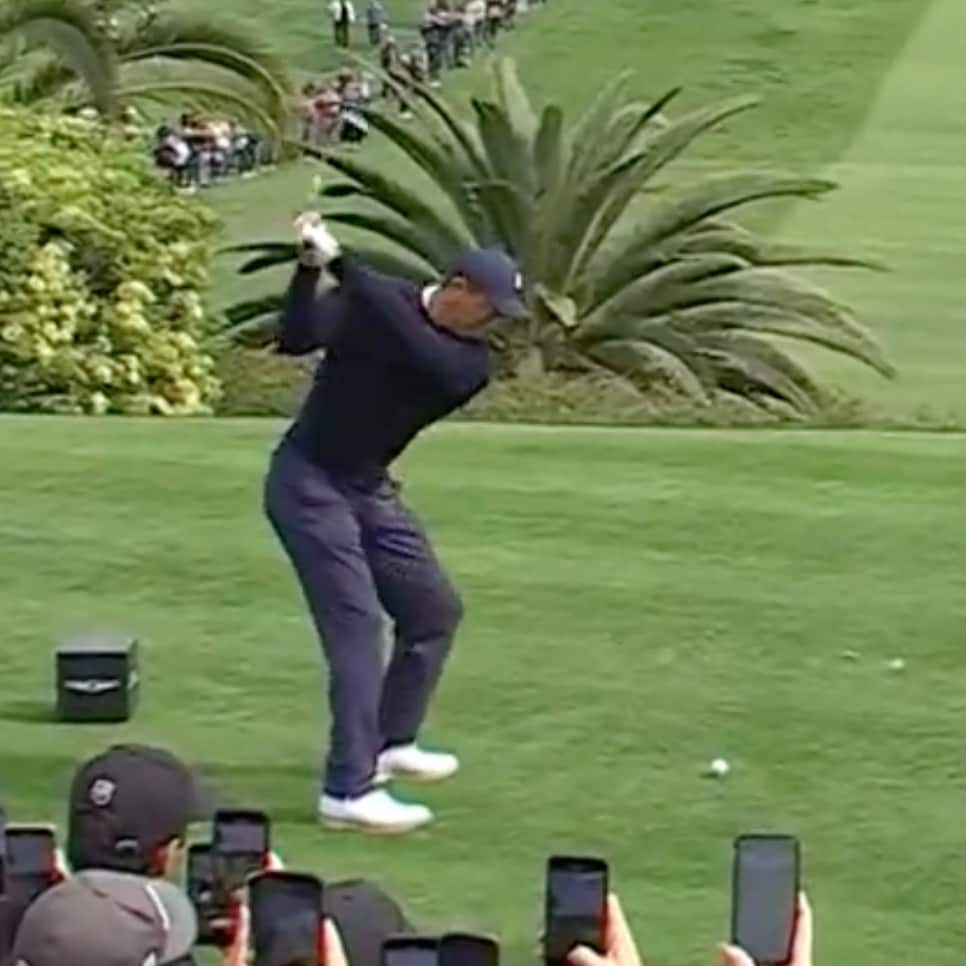Tiger Woods teed it up in his first PGA Tour event at Riviera back in 1992, as a 16 year-old amateur who was obviously destined for the stars — though at the time, nobody could quite imagine how high he would rise.
Looking back on his swing from those days I’m always struck by one thing: How remarkably smooth young Tiger’s tempo was. It was like silk.
Which underlines an interesting point: That Tiger Woods swing tempo changed fairly substantially over the years.
Back in 2004, John Novosel published the book Tour Tempo. In the book, Novosel conducted a detailed analysis of the tempo of various different pros’ golf swings, and established the now widely-accepted standard that pros swing the golf club at a 3-to-1 ratio, meaning that their backswings are three times longer than their downswing. The speed of each player’s swing may change — Sungjae Im has a slower backswing than Jon Rahm, for instance — but the 3:1 ratio always stays the same.
RELATED: Watch the Tiger Woods “My Game” series right here
And it did for Tiger too. But the book also explains that even though the ratio of Tiger Woods’ swing stayed at the same 3-to-1 ratio, his tempo changed: Up until 1997, Young Tiger’s swing moved at a Tour Tempo-recorded 27/9 rate: 27 frames on the backswing, and 9 on the downswing. By 2002, it had gotten faster: to a rate of 24/8. Simply put, both Tiger’s backswing and downswing have gotten faster, and that’s the tempo he uses today.
Why did it change?
Why Tiger’s tempo changed
The first, and most obvious, is that Tiger got stronger as he got older, and started swinging faster because of added muscle mass, along with increasingly lighter driver heads and shafts.
But his change in tempo also coincided with the first big swing change under his then-coach Butch Harmon. As Tiger explains in the video below, his younger swing was one that relayed on good timing, and lots of distance.
“The club was inside, across the line. I was wiry and flexible, so my hips would spin out, my arms would get stuck behind me, and flip at it with my hands,” he explains. “I played a big roping hook…my fade was more of a controlled hook.”
RELATED: Watch the Tiger Woods “My Game” series right here
To prevent his arms from getting lost behind him, Tiger says he would rely on a more deliberate tempo, where everything would come to a slower, more complete stop at the top of his swing, before moving into the downswing together.

But as he got older, stronger in his upper body, and the club got into a position at the top of his swing that was less closed and across the line, his move morphed into a faster, more aggresive motion. There was less of a pause between the backswing and downswing because it was less reliant on timing overall. That’s the tempo that remains today, and it’s one you can spot every time he swings the club.




